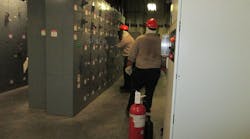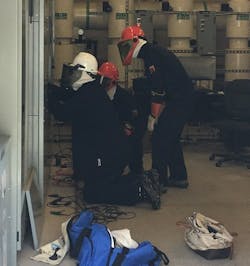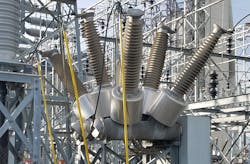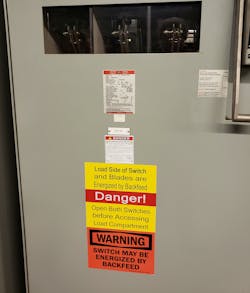Have you ever found yourself faced with an electrical task that involves a potential arc flash hazard, and the first question you ask is: “What level of personal protective equipment (PPE) do I need to wear?” If your answer is yes, then I would argue you’re likely in the majority.
I get asked far more questions about proper levels of PPE (both arc flash and shock) than any other electrical safety-related topic combined. And to be honest, at first, I was thankful — because the fact that so many people are inquiring about proper PPE shows a positive shift in safety in the electrical industry culture over the past few decades. However, over the years, it has become clear to me that we need to continue to drive this cultural shift even further. My goal is to get electrical workers to consider the PPE question as the last question in a series of other important considerations.
Anyone who has taught an NFPA 70E comprehensive electrical safety course knows that someone in the class almost always comments on how many requirements there are when performing a task that might involve an electrical hazard. Initially, people believe all the meetings, paperwork, discussions, and precautions seem to be excessive. I personally believe (and try to teach others) that once you switch your baseline from protection from the hazard to prevention, then all those steps start to make sense. Immediately jumping to protect yourself from the hazard with PPE is essentially assuming it will happen no matter what, prompting you to shield yourself from the hazard’s effects. What NFPA 70E is really striving to achieve is preventing that electrical energy from ever manifesting itself into a hazardous situation in the first place.
For example, NPFA 70E made its bias toward prevention clear in the 2018 revision by explicitly stating that the priority must be elimination of the hazard (Sec. 110.1). This revision also emphasized the need to use the hierarchy of risk control method by moving this requirement from an informational note into the text of the standard. The hierarchy of risk control method provides an assessment process that requires first considering the most effective mitigation (elimination) before moving through the six-step process, which ends with the least effective method (PPE) as noted in Sec. 110.5(H)(3). Although arguably the most important step in any hazard risk assessment, it’s definitely not the first one. To even get to the risk assessment step, you must first recognize there is a potential hazard. All too often, this step gets overlooked when someone is involved in an electrical hazard incident. That reality is a driving force behind why some of the steps that seem excessive come into play.
Arc flash risk assessment
Any work that includes the potential for exposure to an electrical hazard requires that an arc flash risk assessment be performed to identify any arc flash hazards, determine the likelihood of occurrence and the potential severity, and then determine if any protective measures are required to protect the workers. Part of the definition of a QEW is someone who has the skills and knowledge to recognize potential electrical hazards. This only comes from a combination of training and experience. For arc flash, any easy first step is to consider if the task involves exposed conductors or circuit parts that are not in an electrically safe work condition or if the task is starting or stopping current flow. If either of these two conditions will exist, then the QEW must determine if there is enough energy to create and sustain an arc. In lieu of having had an arc flash incident energy assessment performed on the equipment that provides arc flash energy levels, the NFPA 70E contains tables that can assist the QEW in this part of the assessment. If there is a likelihood of an arc flash, the QEW must then determine and document what mitigating actions are required using the hierarchy of risk control method.
Hierarchy of risk control method
Elimination
Elimination is the physical removal of the hazard, which is the most effective hazard control. This is directly related to the NFPA 70E requirement to only work on equipment that is in an electrically safe work condition unless the task is infeasible in this condition. When a conductor is in an electrically safe work condition, there is no exposure to electrical energy. Therefore, the arc flash hazard has been eliminated. However, keep in mind that the action of opening a switch or circuit breaker as one of the steps in creating an electrically safe work condition could pose a potential arc flash hazard.
Substitution
The second most effective risk control method (substitution) involves replacing something that produces a hazard with something that does not produce a hazard or produces a lesser hazard. Here’s a common example: A 480VAC main circuit breaker directly downstream of a transformer is a common location for high arc flash energy levels. The medium-voltage switch on the upstream side of that transformer often has a lower arc flash energy level. Opening the medium-voltage switch substitutes the high energy exposure at the breaker for a lower energy exposure at the switch.
Engineering controls
Engineering controls do not eliminate the hazard but rather isolate the QEW from the hazard. Installing covers over otherwise exposed conductors inside an electrical enclosure to reduce the likelihood of initiating an arcing fault while the enclosure doors are open is an example of engineering controls.
Awareness
Awareness is a method to alert workers of potential electrical hazards inside enclosures, vaults, or any other area. Warning and danger signs are a commonly used form of awareness.
Administrative controls
Administrative controls are methods of changing the way people work. Examples of administrative controls include procedure changes, policy changes, and employee training. Administrative controls do not remove the hazard but are intended to limit or prevent worker exposure to the hazards.
PPE
PPE is the last line of defense and does not eliminate or mitigate the hazard. Instead, it protects the worker from the result of the hazard. When an arc flash event occurs, if QEWs are wearing the appropriate level of arc flash PPE, they should not suffer any burns from the arc flash event.
The intent of the hierarchy of risk control method is to choose the highest-level method or combination of methods to mitigate or minimize the exposure and effects of the arc flash hazard. As shown in this explanation of the method, PPE is the last thing to be considered in this process. There are many other preferred options that can be implemented before jumping into arc flash PPE and working the job. Eliminating the hazard to begin with is always the priority. The shock risk assessment and application of the hierarchy of risk control method is identical to the arc flash process with a focus on the potential for shock hazard.
Electrically safe work condition
An electrically safe work condition is a condition where an electrical conductor or circuit part has been placed into a condition of no potential for electrical hazards for personnel safety. There are eight steps required before equipment can be considered to be in an electrically safe work condition. The QEW must first determine all the sources of electrical energy. The equipment must then be disconnected from all the sources. Whenever possible, the QEW must visually verify all disconnecting devices have been fully opened. Any electrical stored energy must be released, and any mechanical energy must be released or blocked. The disconnect devises must then be locked/tagged in accordance with a documented and established procedure. A QEW must then verify the absence of voltage using the live-dead-live method. Finally, when appropriately sized grounds can feasibly be applied to the conductor or circuit part, the grounds must be applied. Once these steps are complete, the electrical hazards have been effectively eliminated. Keep in mind that completing these steps poses potential for electrical hazards, and appropriate safety measures must be used to safeguard the QEW.
Documentation
Example of a real-world application
After providing electrical safety training for an organization comprised of electricians and electrical engineers, the electricians stated that they all needed their own set of insulated tools. The shop supervisor, who also attended the training, asked me if I thought he should provide insulated tools for all his electricians. In my opinion, providing all the electrical workers with the insulated tools would inadvertently communicate to the workers that the supervisor expects them to work on energized conductors.
On the contrary, the best recommendation is to have one or more sets of insulated tools in locked toolboxes. If the insulated tools are needed, an Energized Electrical Work Permit (EEWP) is also required. Upon successful approval of the EEWP, the electrical worker can be provided with a key for the insulated tools to safely perform the task. However, many times, the process of working through an EEWP will result in finding a means to mitigate the hazard and performing the task in an electrically safe work condition. Leaders of QEWs should always look for ways to encourage and enable their QEWs to find innovative methods for executing their jobs in the safest conditions feasible.
Why is this all necessary?
When it comes to electrical safety requirements in the workplace, it’s easy to feel like there is an excessive number of steps to complete before a QEW ever begins the actual work. However, the requirements are on par with the nature of the hazard. The reality is that when an arc flash event or shock hazard initiates, there is no time to get out of the way at that moment to protect yourself. QEWs must consider the potential hazards before the work starts and already have the appropriate safeguards and mitigations in place to ensure their safety during the job. The intent of the NFPA 70E is to prevent exposure to electrical hazards as a priority over protecting workers from the hazards. The next time you find yourself asking what PPE you need to use, let that be a reminder to take a step back and use the requirements in the NFPA 70E to help plan the job to be safely executed. The requirements discussed here did not cover all of the requirements in NFPA 70E but were used as samples to explain the intent of having hazard prevention as a priority over hazard protection.
Tommy serves as a senior power engineer and branch manager for Jacobs Technology Inc. With more than 20 years in the electrical industry as an electrical engineer, project manager, arc flash program manager, electrical safety trainer, and utility manager, he brings a broad range of experience to his passion for electrical safety. He is also an NFPA 70E compliance subject matter expert, a principal member of the NFPA 70B Committee, electrical safety trainer, certified maintenance and reliability professional, and certified reliability leader. He can be reached at [email protected].








